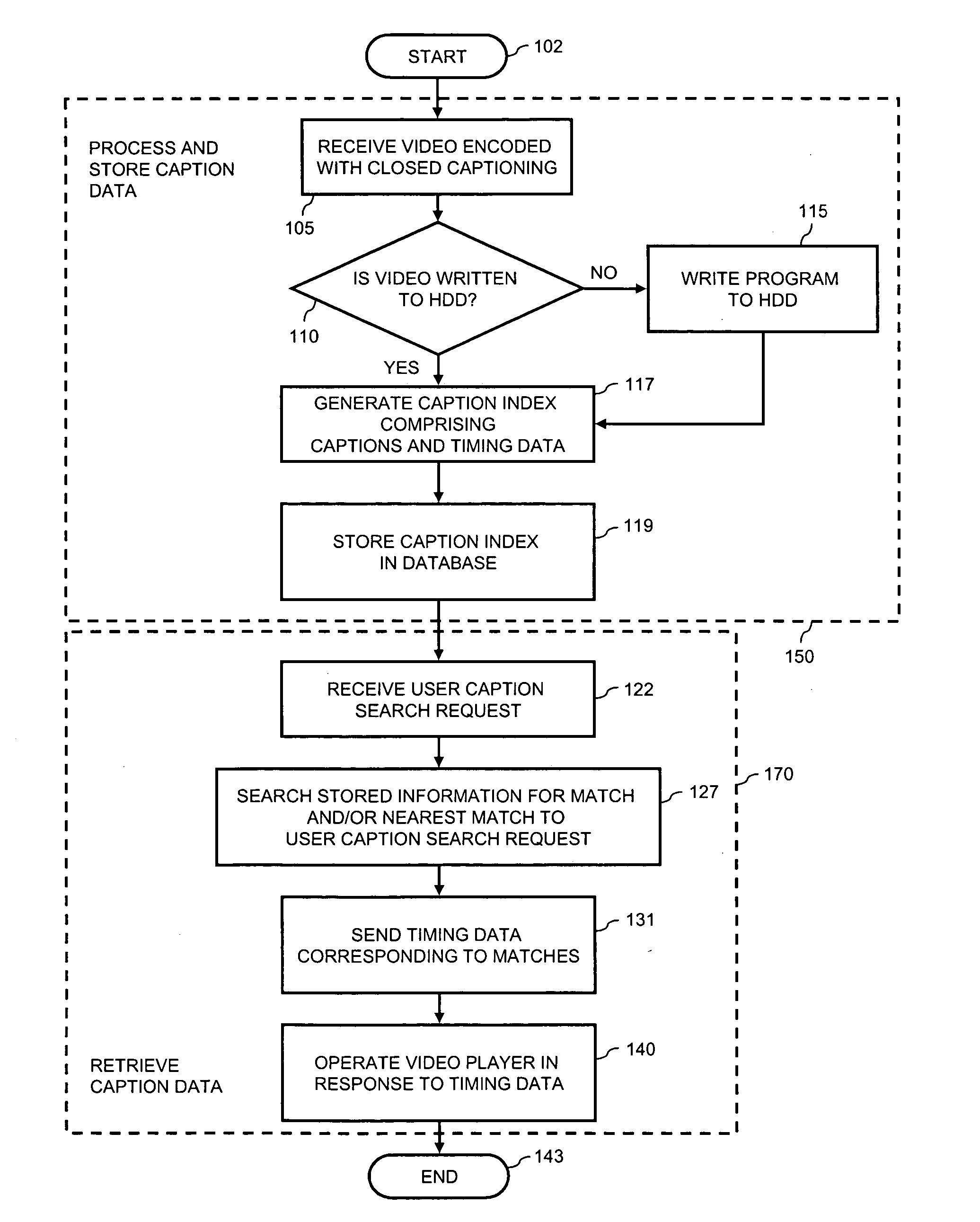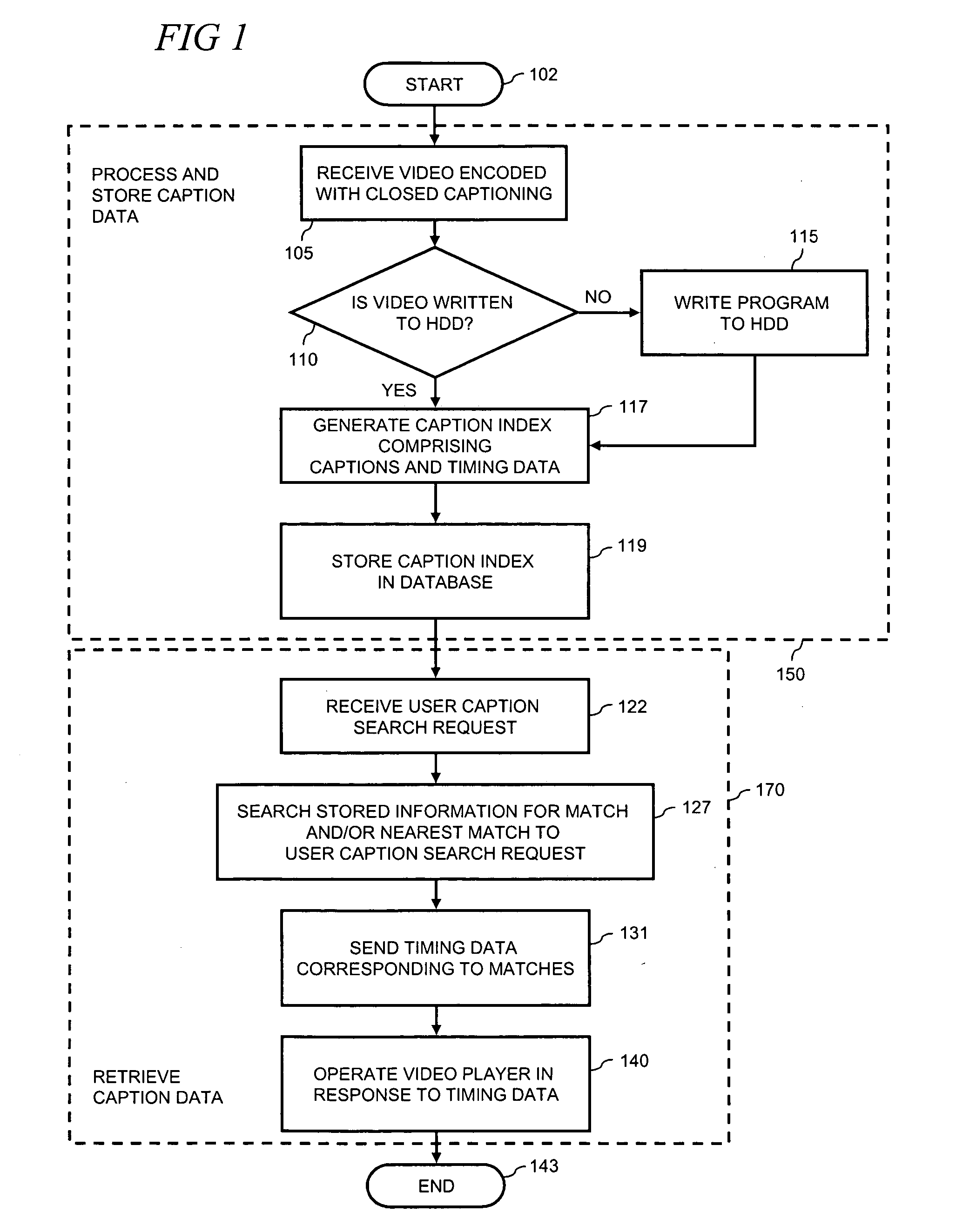Navigating recorded video using closed captioning
a closed captioning and video technology, applied in the field of video navigation, can solve the problems of not being able to locate the scenes easily, not being able to provide the chapter index of visual cues typically provided by the dvr, and not being able to meet all user needs in granularity
- Summary
- Abstract
- Description
- Claims
- Application Information
AI Technical Summary
Benefits of technology
Problems solved by technology
Method used
Image
Examples
Embodiment Construction
[0018] Closed captioning has historically been a way for deaf and hard of hearing / hearing-impaired people to read a transcript of the audio portion of a video program, film, movie or other presentation. Others benefiting from closed captioning include people learning English as an additional language and people first learning how to read. Many studies have shown that using captioned video presentations enhances retention and comprehension levels in language and literacy education.
[0019] As the video plays, words and sound effects are expressed as text that can be turned on and off at the user's discretion so long as they have a caption decoder. In the United States, since the passage of the Television Decoder Circuitry Act of 1990 (the Act), manufacturers of most television receivers have been required to include closed captioning decoding capability. Television sets with screens 13 inches and larger, digital television receivers, and equipment such as set-top-boxes (STBs) for sate...
PUM
 Login to View More
Login to View More Abstract
Description
Claims
Application Information
 Login to View More
Login to View More - R&D
- Intellectual Property
- Life Sciences
- Materials
- Tech Scout
- Unparalleled Data Quality
- Higher Quality Content
- 60% Fewer Hallucinations
Browse by: Latest US Patents, China's latest patents, Technical Efficacy Thesaurus, Application Domain, Technology Topic, Popular Technical Reports.
© 2025 PatSnap. All rights reserved.Legal|Privacy policy|Modern Slavery Act Transparency Statement|Sitemap|About US| Contact US: help@patsnap.com



